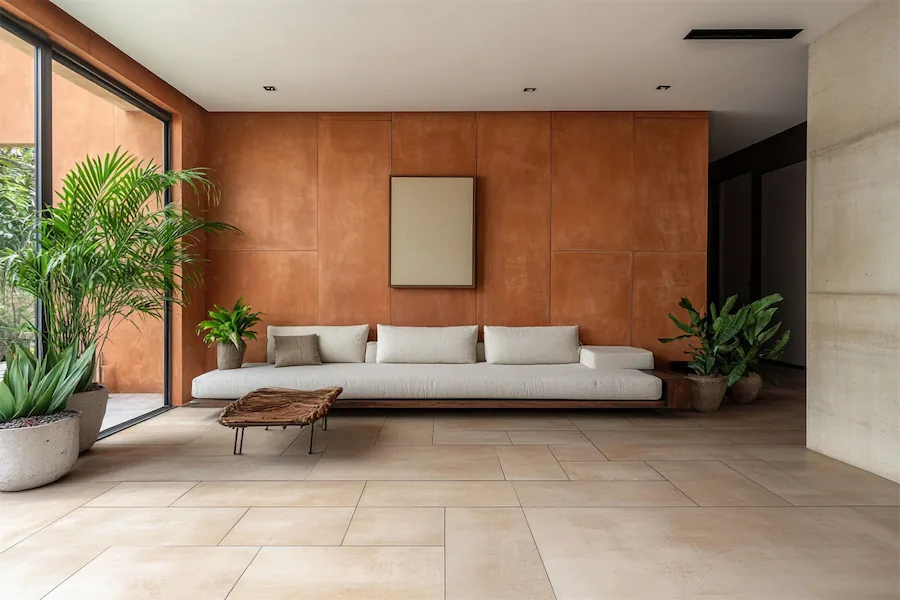Terracotta walls, crafted from fired clay, have been integral to architecture for centuries, offering durability, aesthetic appeal, and natural thermal properties. The term “terracotta” originates from Italian, meaning “baked earth,” reflecting its earthy hues and organic texture.
Introduction to Terracotta Walls
Terracotta, a ceramic material, is produced by firing refined clay mixtures at high temperatures, resulting in a hard, durable product. Its natural colors range from pale beige to deep reddish-brown, depending on the clay composition and firing conditions. In modern architecture, terracotta is utilized in various forms, including cladding panels, sunscreens, and decorative elements, contributing to both the functional and aesthetic aspects of building design.
History and Origins of Terracotta in Architecture
The use of terracotta in construction dates back to ancient civilizations, notably in Mesopotamia, Egypt, and China, where it was employed for bricks, roofing tiles, and ornamental features. During the 19th and early 20th centuries, terracotta experienced a revival, especially in the United States and Europe, as an ornamental and fire-resistant material for building facades. Architects like Louis Sullivan and firms such as the Federal Terra Cotta Company popularized its use in the Beaux-Arts and Chicago School architectural styles.
Key Features of Terracotta Walls
- Durability: Terracotta is resistant to weathering, corrosion, and fire, making it a long-lasting material for building exteriors.
- Aesthetic Versatility: Available in various shapes, sizes, textures, and colors, terracotta allows for creative expression in architectural design.
- Thermal Performance: Terracotta’s natural thermal mass helps regulate building temperatures, contributing to energy efficiency.
- Low Maintenance: The material’s inherent properties require minimal upkeep, retaining its appearance over time without frequent cleaning or painting.
Applications of Terracotta Walls
- Cladding Systems: Terracotta cladding enhances building facades with its rich textures and colors, providing a protective and decorative layer. Modern terracotta rainscreen systems offer ventilated facades that improve thermal performance and moisture management.
- Sunscreens and Louvers: Terracotta sunscreens control solar gain and glare, improving occupant comfort and reducing reliance on mechanical cooling systems. These elements also add depth and rhythm to building exteriors.
- Decorative Elements: Ornamental terracotta pieces, such as cornices, friezes, and moldings, add intricate detailing to structures, reflecting historical architectural styles. The material’s moldability allows for elaborate designs that are both functional and artistic.
Considerations When Choosing Terracotta Walls
- Structural Support: Terracotta elements require appropriate structural backing to ensure stability and longevity, especially in cladding applications.
- Installation Expertise: Proper installation by skilled professionals is crucial to address challenges such as thermal expansion and moisture control.
- Cost Implications: While terracotta offers long-term benefits, initial costs can be higher compared to other materials; however, its durability and low maintenance can offset these expenses over time.
Conclusion
Terracotta walls seamlessly blend historical significance with contemporary design, offering a sustainable and versatile solution for modern architecture. Its enduring qualities and aesthetic flexibility continue to inspire architects to incorporate terracotta into innovative and timeless designs.
